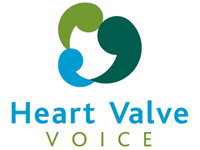Know Your Heart
QUICK LINKS
Know Your Heart
– Women’s Perspectives
– NICE Guideline for Heart Valve Disease
Heart Valve Disease
QUICK LINKS
Heart valve disease is a common, serious, but treatable condition that affects more than 1.5 million people in the UK. Despite it’s prevalence, awareness of the disease is low, so take a few minutes today to get to know your heart, how to spot the symptoms of heart valve disease and what to do if you or anyone you know experiences them.

The Disease
Heart valve disease is a condition that affects the valves within the heart, crucial structures responsible for regulating blood flow. The heart has four valves — tricuspid, mitral, pulmonary, and aortic — that open and close to ensure blood moves in the correct direction. With heart valve disease, these valves can become damaged or dysfunctional, hindering the smooth flow of blood.
Prevalence
The OxVALVE Study reported that for people over the age of 65, the prevalence of heart valve disease will increase from 1.5 million people currently to double that in 2046 and to as many as 3.3 million people by 2056, representing a 122% increase.
Symptoms
The causes of heart valve disease can vary, including age-related wear and tear, congenital defects, infections, or other heart conditions. Symptoms may include shortness of breath, lightheadedness on exertion, feeling older than your age, weary or chest pain, although some individuals may not experience noticeable symptoms.
To help spread awareness, watch and share our SLOW campaign video, click here to watch
#FeelSLOW?ActQUICK
Detection
A stethoscope is a simple tool in detecting heart valve disease. By placing the stethoscope on different areas of the chest, healthcare professionals listen for distinctive sounds produced by the heart valves during each cardiac cycle. With a diseased valve, a clinician hears a murmur. These subtle acoustic cues help physicians identify potential issues, prompting further investigation through imaging tests and diagnostics. The stethoscope remains a frontline instrument for quick, non-invasive assessment of heart valve conditions.
Diagnosis
Echocardiography, a non-invasive imaging technique, plays a pivotal role in diagnosing heart valve disease. Using sound waves, an echocardiogram creates detailed images of the heart’s structure and function. It allows clinicians to visualise the opening and closing of heart valves, assessing their integrity and identifying abnormalities. This method provides crucial information on valve stenosis, regurgitation, or prolapse. Echocardiography’s real-time, dynamic imaging makes it an invaluable tool for accurate diagnosis, guiding treatment decisions and enhancing overall patient care.
Treatment
Open-heart surgery and non-invasive therapies are two distinct approaches to treating heart valve disease. Open-heart surgery involves accessing the heart through an incision in the chest to repair or replace damaged valves. It is effective but involves significant recovery time. Non-invasive therapies, on the other hand, encompass less invasive procedures such as transcatheter valve interventions. These therapies often involve threading a catheter through blood vessels to repair or replace a valve. While open-heart surgery is comprehensive, non-invasive options are gaining prominence for their reduced recovery times and potential for treating certain valve conditions with less impact on the patient and their family.
Watch our Patient Discussion on choosing the right treatment for the right patients.
Our Patient Stories highlight the impact of heart valve disease treatment on patients and their families.
Inequalities
In the UK, disparities in access to heart valve disease diagnosis and treatment persist based on ethnicity and gender. Studies reveal that individuals from certain ethnic backgrounds face barriers to timely diagnosis, often experiencing delayed or inadequate healthcare. Additionally, gender-based inequalities impact women, who may encounter under-diagnosis or delayed treatment compared to their male counterparts. Socioeconomic factors further compound these disparities, with marginalised communities facing greater challenges in accessing specialised care. Addressing these inequalities requires targeted interventions, culturally sensitive healthcare approaches, and awareness campaigns to ensure equitable access to timely diagnosis and treatment for all individuals, irrespective of ethnicity or gender.
Shared Decision Making
Shared decision-making helps people have informed conversations with their healthcare providers, allowing them to choose a treatment option that aligns with their personal values and goals. Currently, shared decision-making is often not routinely available to people living with heart valve disease, despite the benefits it has been shown to have in improving people’s satisfaction with care and quality of life. Click here to read Global Heart Hub’s report on Shared Decision Making to find out what good shared decision making means.
Know Your Heart
QUICK LINKS
Know Your Heart
– Women’s Perspectives
– NICE Guideline for Heart Valve Disease
Heart Valve Disease
QUICK LINKS



